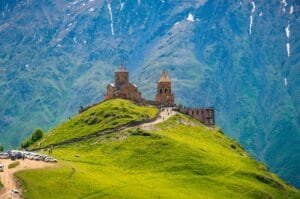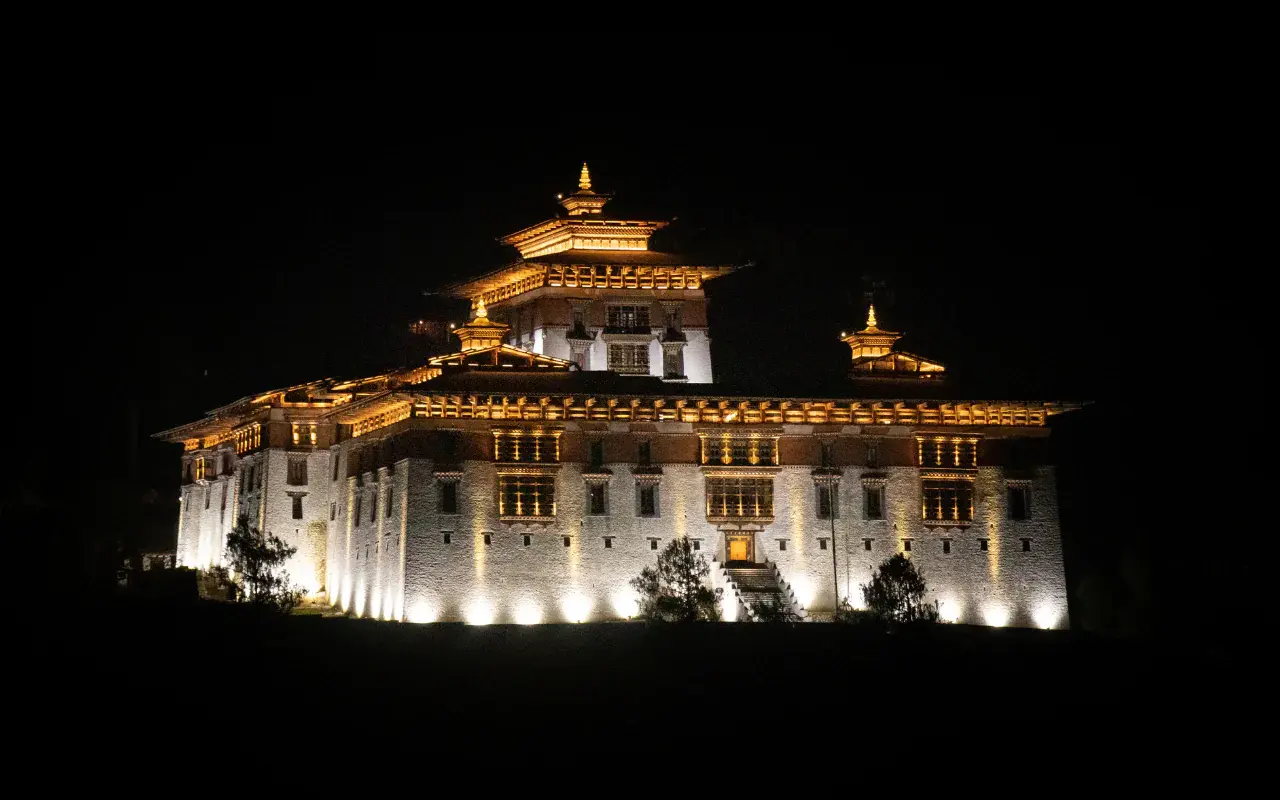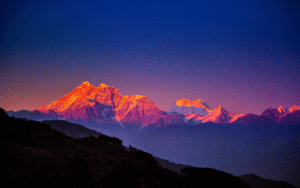


Bhutan Odyssey
Overview
- Embark on a remarkable journey through Bhutan, exploring Thimphu, Punakha, Bumthang, and Paro. Begin in Thimphu, where tradition meets modern life amid monasteries and markets. Continue to Punakha, home to the grand Punakha Dzong, then on to Bumthang, the spiritual heart of Bhutan. End in Paro with a hike to the iconic Taktsang Monastery. This journey offers a perfect blend of culture, nature, and spiritual depth.
Trip Highlights
- Arrival at Thimphu
- Thimphu Local Sightseeing
- Thimphu - Punakha || 80 kms || 1-2 hrs ||
- Punakha - Bumthang || 220 kms || 3-4 hrs ||
- Bumthang Local Sightseeing
- Explore Ura Village
- Bumthang - Punakha || 220 kms || 3-4 hrs ||
- Punakha - Paro || 120 kms || 2-3 hrs ||
- Explore Taktshang Monastery
- Explore Chele - la - Pass
- Departure from Paro
Itinerary
Meet & Greet on arrival at Paro Airport and transfer to Thimphu (7,710 ft.) the capital city of Bhutan. On arrival check in at the hotel. In the evening, you may choose to relax at the hotel or take a leisure walk around the Thimphu City. Overnight stay at Thimphu.
Begin the day at Kuenselphodrang, home to the giant Buddha Dordenma with stunning views of Thimphu Valley. Explore Bhutanese culture at the National Memorial Chorten and Folk Heritage Museum. Visit Sangaygang View Point, the Takin Preserve Centre, and Changangkha Lhakhang. End the day at the majestic Tashichho Dzong.
After breakfast, drive to Punakha/Wangdue via Dochu-La Pass, enjoying views of the Himalayas and 108 Druk Wangyel Chortens. Visit the historic Punakha Dzong, once Bhutan’s seat of government. Later, hike to Chhimi Lhakhang, the Temple of Fertility, known for its spiritual significance. Enjoy a relaxed evening and overnight stay.
After breakfast, check out and drive to Bumthang via Pele-La Pass, marking Bhutan’s east-west divide. En route, visit Chendebji Chorten, Trongsa Dzong, and the Ta Dzong museum. Pass through Yotongla into Bumthang Valley, stopping at Chhumey Valley’s Yathra Weaving Factory. Arrive in Bumthang for an overnight stay.
After breakfast, explore Bumthang’s spiritual landmarks starting with Jakar Dzong, known as the Castle of the White Bird. Visit Lamey Goemba and Jambay Lhakhang, famous for its annual festival. Continue to Chakhar Lhakhang, the legendary Iron Castle, and Kurjey Lhakhang, linked to Guru Rinpoche. In the afternoon, see Tamshing Lhakhang and the sacred Burning Lake (Membartsho). Return to the hotel for an overnight stay.
After breakfast, drive to Ura Valley, passing through scenic forested Himalayan slopes. Stop at Ura Shelthangla for stunning views of Gangkhar Puensum, Bhutan’s highest peak. Explore Ura village and its temple, observing the lifestyle of yak and sheep herders. Return to Bumthang, with optional visits to a cattle farm and apple factory.
After breakfast, drive to Punakha/Wangdue with a visit to Gangtey Valley en route. Explore Gangtey Goemba, a 17th-century Nyingmapa monastery, and the scenic Phobjikha Valley, a glacial valley and winter habitat for endangered Black Necked Cranes. Later, continue to Punakha for an overnight stay amidst serene Himalayan surroundings.
After breakfast, drive to Paro with a stop at the Royal Botanical Park in Lamperi, known for its rhododendrons and diverse birdlife. On arrival, check in at the hotel and relax. Visit Ta Dzong, the National Museum, showcasing Bhutanese art and relics. Explore Rinpung Dzong, an important administrative and judicial center. Enjoy a leisurely evening and overnight stay in Paro.
After breakfast, hike to Taktshang Monastery (Tiger’s Nest), a sacred site built in 1684 around Guru Rinpoche’s meditation cave on a cliffside. Legend says he arrived flying on a tigress. If time permits, visit the historic Drukgyel Dzong and Kichu Lhakhang, one of Bhutan’s oldest temples. Overnight in Paro.
After breakfast, drive to Chele-La Pass, Bhutan’s highest motorable point, offering stunning views of Mt. Jhomolhari and Jichu Drake. Enjoy scenic forest landscapes, photography, and birdwatching en route. Hike to the serene Kila Goemba nunnery on the return. Spend the evening exploring Paro town and stay overnight at the hotel.
After breakfast check out from hotel and drive to Paro Airport for your onward journey with beautiful memories.









